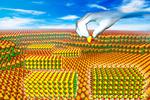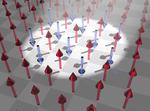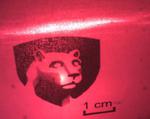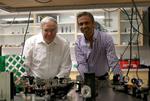Other

“Materials scientists at Duke University have developed a method to create hybrid thin-film materials that would otherwise be difficult or impossible to make. The technique could be the gateway to new generations of solar cells, light-emitting diodes and photodetectors. The …

“WPI-MANA has developed the world’s highest performance dielectric nanofilms using atomically thin perovskites. This technology may revolutionize the next-generation of electronics. This research was conducted by a WPI-MANA research group led by Principal Investigator Minoru Osada and …

“With the power-conversion efficiency of silicon solar cells plateauing around 25%, perovskites are now ideally placed to become the market’s next generation of photovoltaics. In particular, organic-inorganic lead halide perovskites offer manufacturing versatility that can potentially translate into much …

“Using computer simulations, researchers are learning how lasers might be used to switch how electrons spin within magnetic materials, making room for faster magnetic memory devices. Tohoku University researchers have developed a computational simulation that shows that using ultrafast laser …

“Red-sensitive, blue-sensitive and green-sensitive color sensors stacked on top of each other instead of being lined up in a mosaic pattern – this principle could allow image sensors with unprecedented resolution and sensitivity to light to be created. However, so far …

“Since their invention in 1962, semiconductor diode lasers have revolutionized communications and made possible information storage and retrieval in CDs, DVDs and Blu-ray devices. These diode lasers use inorganic semiconductors grown in elaborate high vacuum systems. Now, a team of …

“A mineral discovered in Russia in the 1830s known as a perovskite holds a key to the next step in ultra-high-speed communications and computing. Researchers from the University of Utah’s departments of electrical and computer engineering and physics and …
News NREL, University of Washington Scientists Elevate Quantum Dot Solar Cell World Record to 13.4 Percent

“Researchers at the U.S. Department of Energy’s (DOE) National Renewable Energy Laboratory (NREL) established a new world efficiency record for quantum dot solar cells, at 13.4 percent. Colloidal quantum dots are electronic materials and because of their …

“Even as the power of our modern computers grows exponentially, biological systems — like our brains — remain the ultimate learning machines. By finding materials that act in ways similar to the mechanisms that biology uses to retain and process information, scientists …

“While hydrogen is often talked about as a pollution-free fuel of the future, especially for use in fuel cell electric vehicles, hydrogen can be used for much more than zero-emission cars. In fact, from enhancing the flexibility of the grid …
